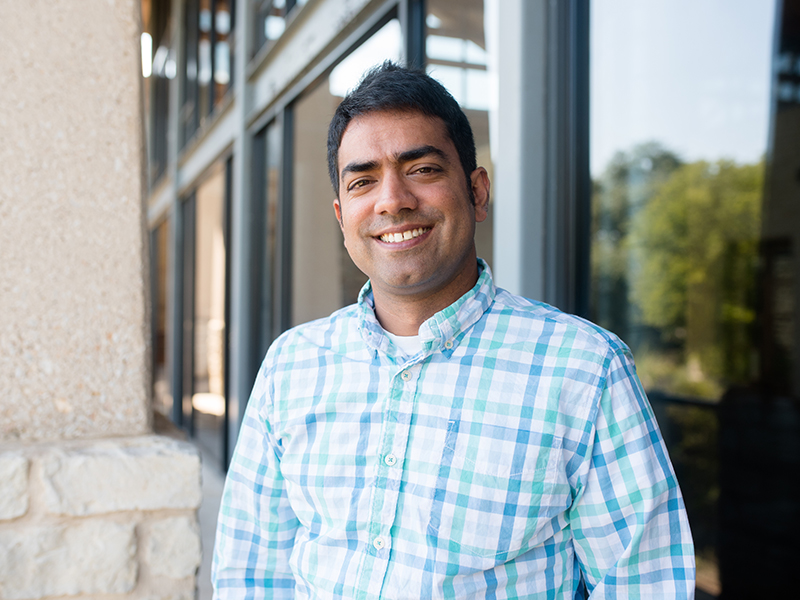Engineers at The University of Texas at Austin aim to answer two major questions about the novel coronavirus by examining how it operates in changing environments.
Sapun Parekh, an assistant professor in the Cockrell School of Engineering’s Department of Biomedical Engineering, is setting up a pair of coronavirus experiments. One tests how SARS-CoV-2, the virus that causes COVID-19, will behave at different temperatures to know if the summer heat may slow the virus; and another looks at the physiological changes in lungs as people age to try and explain the increased vulnerability among elderly populations.

The lung experiment is the higher priority of the two, Parekh said. Preliminary results for that project could be ready in a month or two.
Parekh is quick to note he has no background in virology. However, like many researchers around the world, he wants to do his part to combat the virus. That’s why he is applying his lab's expertise in biophysics and microscopy toward answering these key questions about the virus.
"Trying to help people who are making vaccines in any way, I think, is a useful endeavor," Parekh said.
Are differences in the lungs the reason for increased risk among elderly population?
That coronavirus is more dangerous among elderly populations is a well-documented trend. However, Parekh says there is no proven hypothesis explaining why. Figuring that out is an important step in creating a treatment.
To try and answer this question, Parekh is looking at how changes in people’s lungs as they age affect their vulnerability to the virus. As people get older, their lungs become stiffer and more fibrotic, Parekh said, unable to expand and contract as much as they could in the past.
The experiment will simulate the effects of tissue stiffening and fibrosis and the resulting deformations of epithelial cells. Then, Parekh will measure how those changes impact the cells’ ability to defend against viral entry.
“Is the infective load different in someone who is my father's age of 80?” Parekh said. “Is more virus entering into his lungs and airway than mine? Or is it that his immune system is not able to mount a strong response?”
Will summer stop the virus?
The temperature experiment aims to prove or disprove the hope that the virus will fade during the warmer summer months. The plan is to lay coronavirus-like nanoparticles onto surfaces at different temperatures, then incubate those particles with cells and see how the uptake changes.
The argument for COVID-19 fading in the summer comes from its relative, SARS, after the spread of that virus slowed in the summer of 2003. However, Harvard researchers recently noted that SARS faded not because of the change in season but aggressive government intervention. They predicted COVID-19 could become slightly less contagious in the summer, but a change in temperature likely won't be enough to make it disappear entirely.
Parekh noted the number of cases in countries in the Southern Hemisphere, in the midst of the warmest time of the year, is much lower than in Northern Hemisphere nations. There could be plenty of reasons for this — the bulk of the world's population resides in the Northern Hemisphere and a lack of testing in some areas makes the data hard to count on. But Parekh says he “doesn’t have skin in the game one way or the other;” he just wants to provide some answers.
He asks, “What does the outside temperature have to do with the infection, or does it not have anything to do with it? Do the virus just dry (cake) onto surfaces, making infection much less efficient; are there molecular changes in viral coat proteins that limit infection? Or, are we just healthier in the summer because our immune systems aren’t taxed as much so it’s easier to fight against the infection?”
Parekh is working on both experiments with postdoctoral researchers Sachin Kumar and Alexandra Paul and first-year graduate student Christian Jennings.







